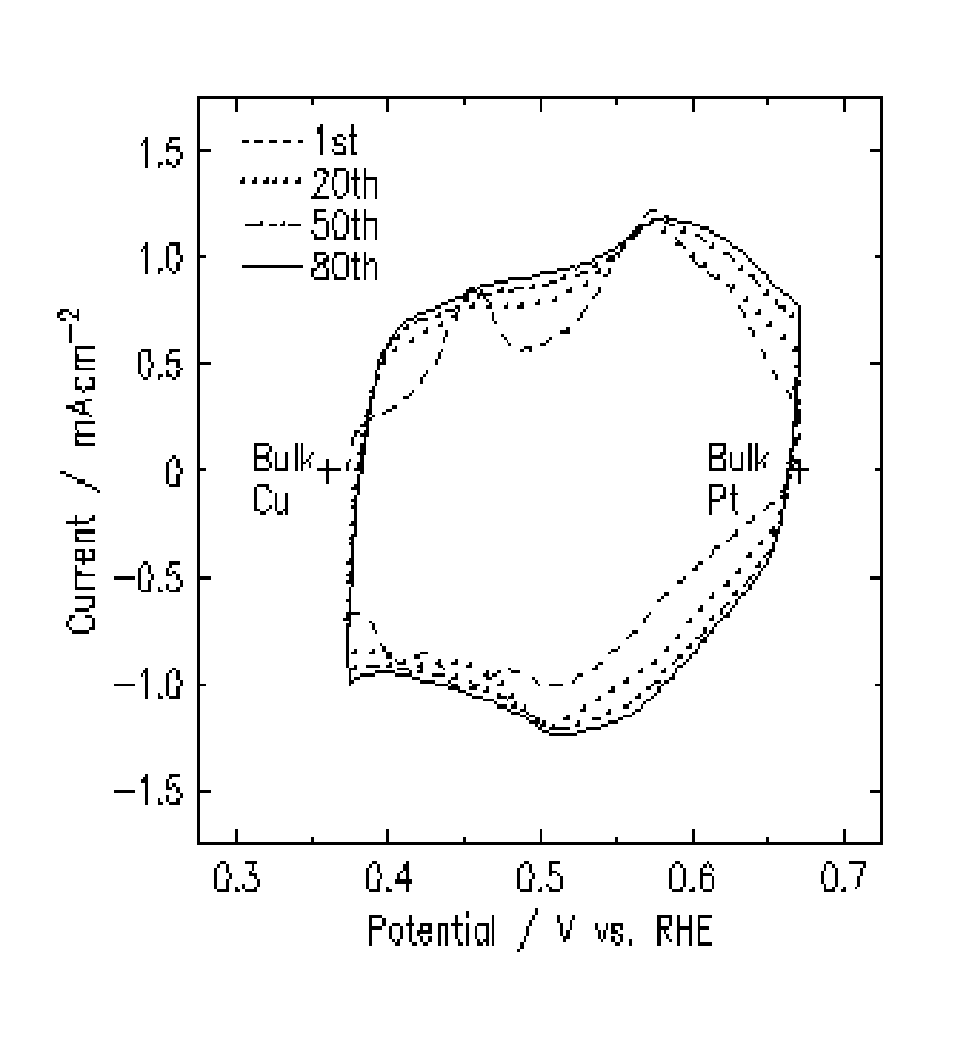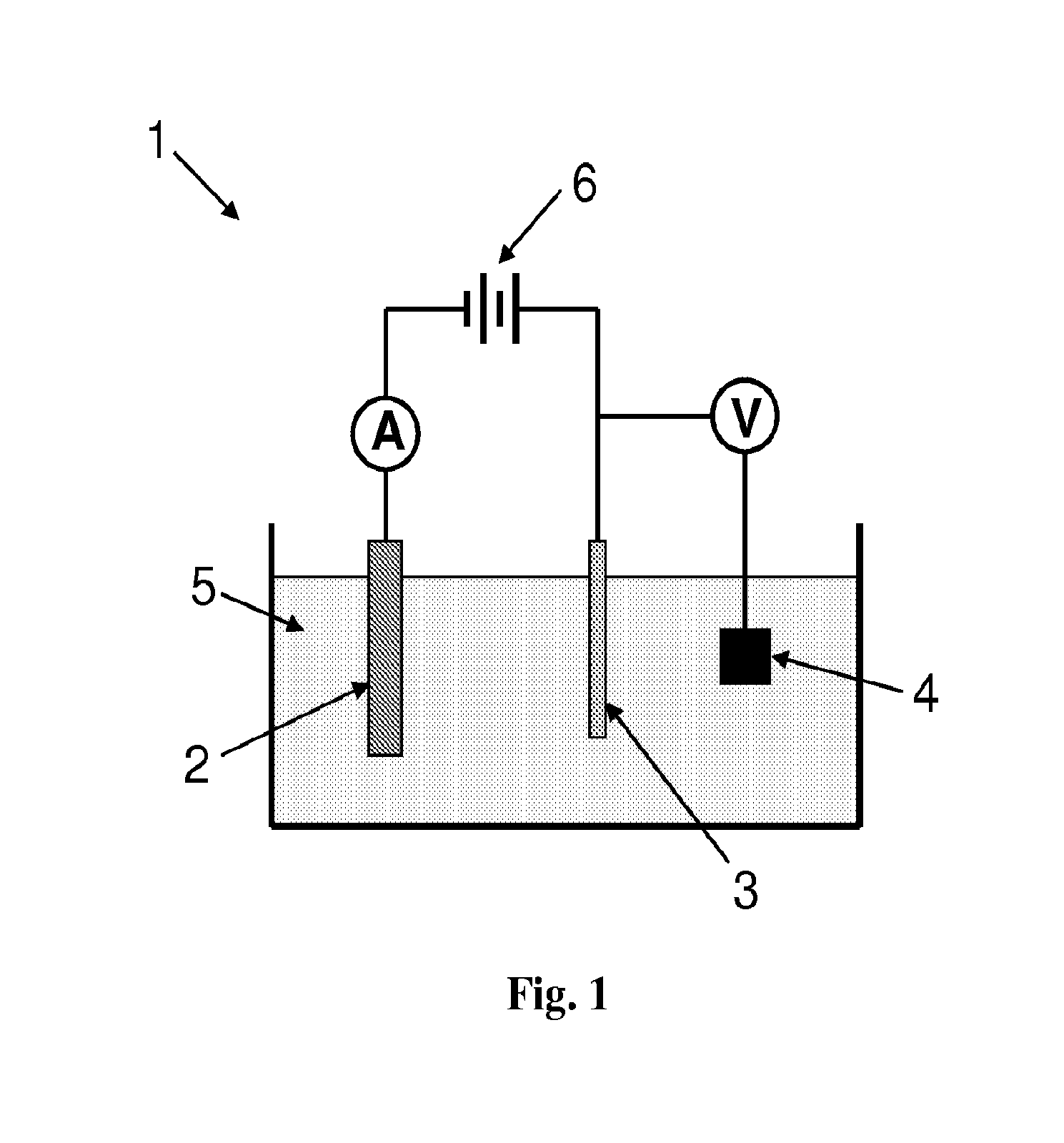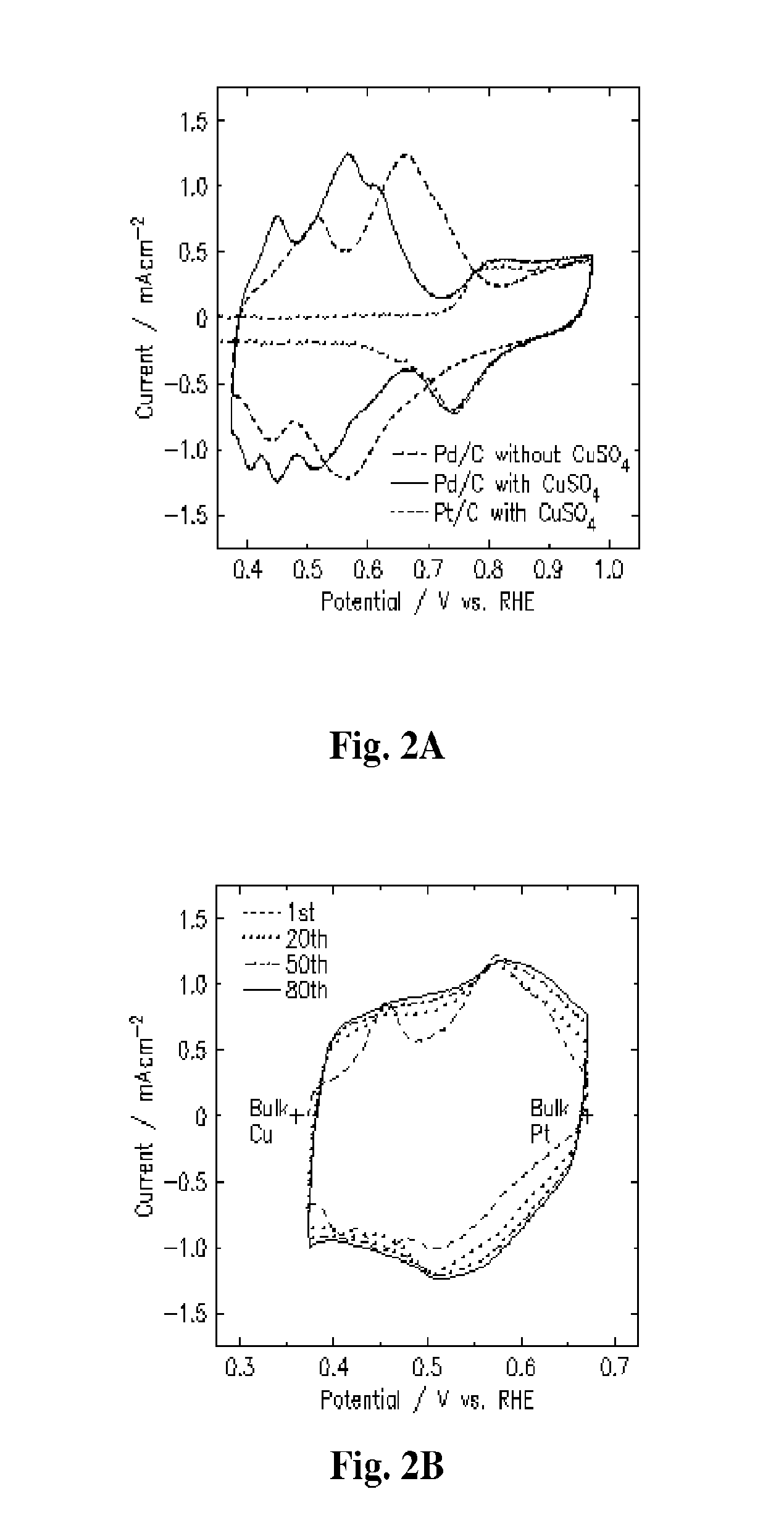Underpotential deposition-mediated layer-by-layer growth of thin films
a technology of underpotential deposition and thin film, which is applied in the direction of metal/metal-oxide/metal-hydroxide catalysts, physical/chemical process catalysts, cell components, etc., can solve the problems of repeated cycles of adsorption, concomitant deposition of desired materials, and desorption of mediating elements. achieve the effect of reducing the loading of precious metals, maximizing the catalytically active surface area, and facilitating
- Summary
- Abstract
- Description
- Claims
- Application Information
AI Technical Summary
Benefits of technology
Problems solved by technology
Method used
Image
Examples
Embodiment Construction
[0025]In the interest of clarity, in describing the present invention, the following terms and acronyms are defined as provided below:
Acronyms
[0026]ALD: Atomic Layer Deposition[0027]CVD: Chemical Vapor Deposition[0028]ICP: Inductively Coupled Plasma[0029]MBE: Molecular Beam Epitaxy[0030]NHE: Normal Hydrogen Electrode[0031]OPD: Overpotential Deposition[0032]ORR: Oxidation Reduction Reaction[0033]PLD: Pulsed Laser Deposition[0034]TEM: Transmission Electron Microscopy[0035]UPD: Underpotential Deposition
Definitions
[0036]Adatom: An atom located on the surface of an underlying substrate.[0037]Adlayer: A layer of atoms adsorbed to the surface of a substrate.[0038]Bilayer: Two monolayers, one directly on top of the other.[0039]Catalysis: A process by which the rate of a chemical reaction is increased by means of a substance (a catalyst) which is not itself consumed by the reaction.[0040]Electrocatalysis: The process of catalyzing a half cell reaction at an electrode surface by means of a su...
PUM
| Property | Measurement | Unit |
|---|---|---|
| size | aaaaa | aaaaa |
| temperatures | aaaaa | aaaaa |
| diameter | aaaaa | aaaaa |
Abstract
Description
Claims
Application Information
 Login to View More
Login to View More - R&D
- Intellectual Property
- Life Sciences
- Materials
- Tech Scout
- Unparalleled Data Quality
- Higher Quality Content
- 60% Fewer Hallucinations
Browse by: Latest US Patents, China's latest patents, Technical Efficacy Thesaurus, Application Domain, Technology Topic, Popular Technical Reports.
© 2025 PatSnap. All rights reserved.Legal|Privacy policy|Modern Slavery Act Transparency Statement|Sitemap|About US| Contact US: help@patsnap.com



